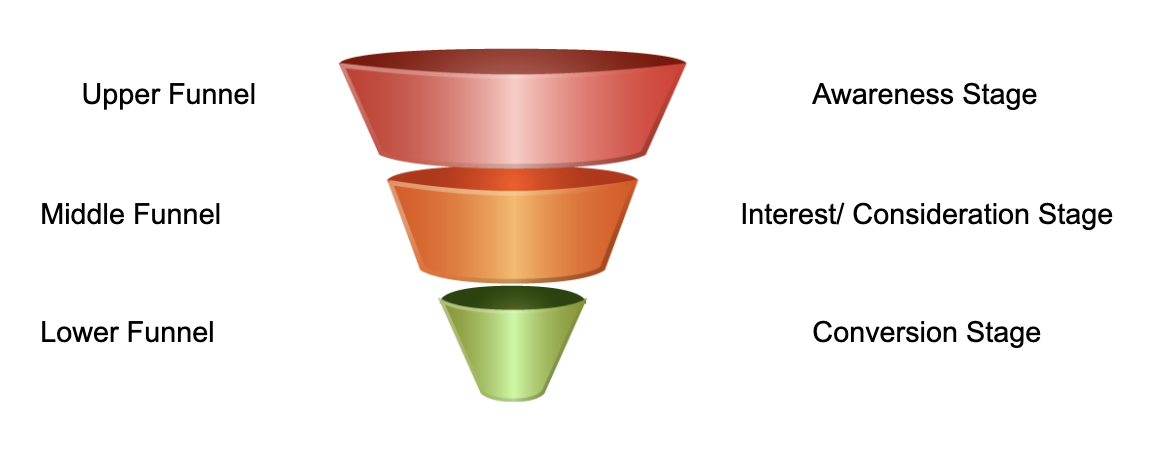As far back as the 19th century, the challenge to quantify advertising performance and investment was already a top of mind issue for marketers.
Advertising has been around for roughly more than 200 years in different forms: print media, billboards, pamphlets, and more recently, TV and online ads. One of the biggest challenges with all the earlier forms of advertising was to measure the effectiveness of the campaigns, to draw correlations and insights on users’ responses to ads.
The challenge in collecting data and measuring the performance is, however, solved with the modern day technology and tools. Current day technology empowers marketers to drill down to the most granular levels of data measurement and processing to influence the end to end customer experience by connecting and mapping customer engagements across multiple channels. 
Marketers develop campaigns keeping campaign objectives in mind. Let us take an example where the strategy of the campaign is viewed in terms of a funnel.
- The top stage represents the audience’s awareness of your brand or product.
- The middle part represents Interest in or consideration of your brand.
- The last section is the action or the conversion stage.
As most marketers know, one cannot define the success of the entire campaign using a single metric. The objective of the campaign and the campaign channel – Display, Video, Social – at each stage demands a different thought process.
In this article, we will discuss the importance of each stage of the campaign and how to measure the success of a display campaign at each stage.
Stage 1: Upper Funnel- Improving Brand Awareness
This is the stage of the funnel where a marketer should concentrate on improving brand visibility and convincing the consumers on the value of your brand and how you differ from your competitors.
At this stage, the most important objectives of the campaign are to create awareness among prospects, educate users about your brand, and generate hype for your product and services.
This stage is crucial from the brand’s perspective since the success of this stage will form the base for upcoming phases of the campaign.
Key metrics which define the success of Stage 1 of the campaign:
Reach (Reaching as many unique audiences in your T.G) – Number of ad impressions delivered to unique individuals. This, essentially means reach as many unique targeted individuals as possible to drive the engagement.
Engagement Rate (Get people to engage with your ad) – Engagement rate is defined as the number of user Interactions on an ad divided by the number of impressions served. Interaction means any user engagement such as mouseover, clicking, Resuming/Playing Video, and the like.
Here’s an example where a leading financial and accounting software company sought to increase awareness for its B2B tools. The campaign focused on small and micro business owners and business decision influencers in Canada and the US.
The campaign achieved its objective and was validated by the increased engagement rate, which exceeded the industry benchmarks.
Ad example from the campaign
Stage 2: Middle Funnel – Generating Interest
The middle funnel focuses on interested consumers who are considering to buy your product/services; the goal of Marketers here is to move the users down the purchase path to the action stage. By this point, the users are already aware of your brand, possibly interacted with your website but are not yet fully convinced.
The middle funnel strategy is one of the most challenging one to master. In this stage, marketers ideally expect to go beyond brand awareness to brand consideration stage, by focussing on specific products/services of the brand.
Key metrics which define the brand’s success in generating user interest:
ClickThrough Rate (Get people to click on an ad)- Ads in this stage should typically focus on content marketing – this helps brands to stimulate interest in its products/services through sharing brand assets such as videos or blogs. Content marketing strategy works best in cases where the users are aware of the brand and have already interacted with the brand. Yet, they need a little push to take the next step with the brand.
Getting people to click on the ad and taking them to land on a relevant page pushes the user to the next funnel – Conversion funnel.
In the next example, an automotive brand used advanced retargeting strategy to re-engage with the potential buyers. The campaign strategy combined audience search history with users’ various website “drop-off” points to personalize ad messaging, which resulted in a significant engagement lift of 7x the industry CTR.
Ad example from the campaign
Stage 3: Lower Funnel – Driving Conversions
One of the direct ways to measure the campaign’s success – the top line management goal – is to measure how many users have purchased your product or opted to use your services after seeing/interacting with your ads.
Key metric to track Conversions:
ROAS – Return on Advertising Spend is a KPI to determine media effectiveness. It is calculated by dividing Revenue by the Advertising Cost.
Conversion Rate – A conversion cannot be defined as a universal action (Common for all). Campaign conversions are industry-specific and campaign objective-specific. An example of a typical conversion in e-commerce is Cart Check-out, but for an automobile company, conversion means Booking a Test Drive.
The conversion rate is defined as the number of conversions divided by the number of impressions served.
Tip to improve conversion rate – Personalize the clickthrough URL of the website for the user such that the user lands precisely on the page where information relevant to him/her is served. Personalized content increases conversions, which is defined by the brand’s campaign objective.
In this final example, a leading hospitality chain sought to increase room bookings through the adoption of new technologies to create personalized content with the readily available first party and contextual data. The result was increased conversions by 14% between Phase I and Phase II of the ad campaign.
Ad example from the campaign
Importantly, marketers should focus on metrics that matter. These are not just numbers but metrics tying back to organizations top-line goals and objectives.
I will leave you with a final thought:
The metrics you choose measures the success of your marketing strategy. So, choose appropriately.




